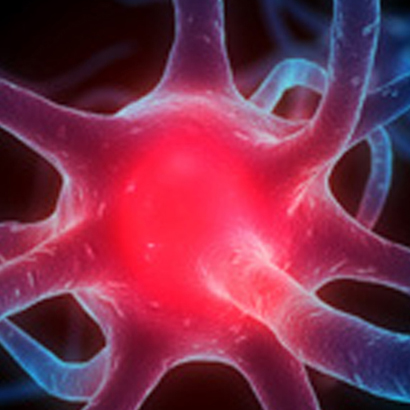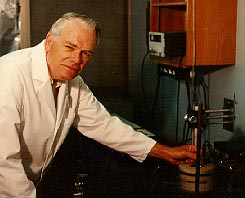Our Emeritus Faculty
Walter Hill
Professor Emeritus
Contact
- Office
- Clapp Building 116
- Phone
- (406) 243-5140
- Fax
- (406) 243-4304
- walter.hill@umontana.edu
- Curriculum Vitae
- View/Download CV
Education
B.S. Brigham Young University, 1961
M.S. University of Wisconsin, 1964
Ph.D. University of Wisconsin, 1967
Research Interests
Ribosomes are present in all living cells and play a central role in protein biosynthesis. We have been studying the structure and function of these complex macromolecules using an arsenal of techniques.
Our present approach is still under some development, but it is terrific. We use chemical reagents to probe the ribosomal RNA. These probes are able to identify specific nucleotides in the RNA and tell us whether they are exposed or not. By using these, we can identify structural changes occurring in the ribosomal RNA as the ribosome performs its gymnastics during the translational process. This is done by mixing ribosomes and some other component, say tRNA, and looking at the resulting changes that occur in the ribosomal RNA structure as tRNA is bound. This is done in millisecond time blocks, to identify the transitional changes that occur as time progresses. Since we know the absolute structure of the ribosome from crystallography, it is now possible to identify those changes that occur as the ribosome binds messenger RNA, transfer RNA or various translation factors involved in the synthesis of proteins. It gives us the possibility of making a movie of how the ribosome changes during translation.
This approach is extremely new and the first papers are just rolling out. There are a great many projects open, needing to be done, which will aid in determining the structural changes that occur as the ribosome performs the translational functions. We are anxious to pursue as many of these as possible.
In addition to the above approach, we use a variety of techniques in our laboratory, including centrifugation, gel electrophoresis, high performance liquid chromatography (HPLC), hybridization, synthesis and sequencing of nucleic acids, and others. We are fortunate to have a substantial number of excellent, state-of-the-art instruments to provide the tools necessary to perform these experiments. It is our desire to help all students learn as many techniques as possible to provide them with maximum expertise in the area of molecular biology and biochemistry.
Selected Publications
1. E. Hedrick and W.E. Hill (2010) "Protein S20 Binds Two 16S rRNA Sites as Assembly is Initiated," J. Mol. Biol. 401:493-502
2. C. Woolstenhulme and W.E. Hill (2009) "The Genesis of Ribosome Structure: How a Protein Generates RNA Structure in Real Time," J. Mol. Biol. 392: 645-656.
3. Fabbretti, C.L. Pon, S.P. Hennelly, W.E. Hill, J.S. Lodmell, and C.O. Gualerzi, (2007) "The Real-Time Path of Translation Factor IF3 onto and off the Ribosome," Mol. Cell 25: 285-296.
4. W. S. Bowen, N. Van Dyke, W.E. Hill, E. J. Murgola, and J. S. Lodmell (2005) "Interaction of Thiostrepton and Elongation Factor-G with the Ribosomal Protein L11-Binding Domain," J Biol Chem. 280:2934-43.
5. W. Knight, W.E. Hill, and J.S. Lodmell (2005) "The Ribosome Builder: a Software Program to Simulate the Ribosome," Comp. Biol. & Chem. 29:163-174.
6. S. P. Hennelly, A. Antoun, M. Ehrenberg, C.O. Gualerzi, J.S. Lodmell, and W.E. Hill, (2005) "A Time-Resolved Investigation of Ribosomal Subunit Association," J. Mol. Biol. 346: 1243-1258.
7. L. Brandi, S. Marzi, A. Fabbretti, C. Fleischer, W. E. Hill, C.O. Gualerzi and J.S. Lodmell (2004) "The Translation Initiation Functions of IF2: A Novel Target for Thiostrepton Inhibition," J. Mol. Biol. 335:881-894.
8. S. Marzi, W. Knight, L. Brandi, E Caserta, N. Soboleva, W.E. Hill, C.O. Gualerzi, and J.S. Lodmell (2003) "Ribosomal localization of translation initiation factor IF2." RNA 8: 958-969.

